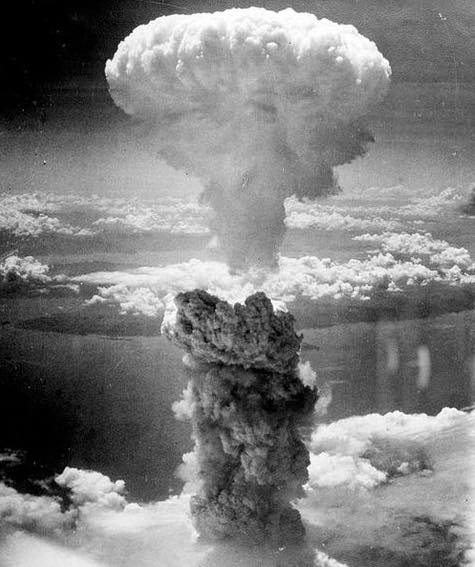
The total destruction of that city, and the instant incineration of 40,000 mostly civilian people, occurred just three days after the destruction of Hiroshima by a 15-kiloton uranium bomb, which instantly killed 70,000. This criminal one-two punch by the US launched the atomic age.
The bombings have always been, and still are, presented to young Americans in school history texts, and to Americans in general by government propaganda, as having been “necessary” to end the war quickly and to avoid American ground troops having to battle their way through the Japanese archipelago. But later evidence – such as the frantic but vain efforts made as early as May by the Japanese government to surrender through the Swiss embassy, and later reports that Japan’s biggest concern was not the destruction of its cities, but rather fear that Soviet forces, victorious in Europe, would attack Japan from the north and into Japanese-occupied Korea – has undermined that US mythology.
In fact, it can be argued that President Truman and his war cabinet didn’t really want a Japanese surrender until the two bombs that the Manhattan Project had produced had been demonstrated on two Japanese cities. The target audience of those two mushroom clouds were not so much Japan’s leaders as Stalin and the Soviet government in Moscow.
At the war’s end, the US government was almost giddy, feeling that it had come out on top – its industry humming, its homeland unscathed, its military now built up and hardened by battle experience, and a super weapon that no other nation had in its arsenal. Germany and Japan were vanquished and it was felt that the Soviet Union, which had suffered heavy human and infrastructural damage during the war, was a good 10 years away from developing its own bomb. The Soviet spy network inside and around the Manhattan Project had not yet been discovered.
There was talk in the Pentagon and President Truman’s war room of taking advantage of America’s monopoly on nuclear weapons to attack the USSR and make sure it could never develop a bomb. In fact, there was talk of using atom bombs to destroy Russia as an industrial nation…
For the rest of this article by TCBH! member Dave Lindorff, please go to RT.com, where this piece originally appeared.
